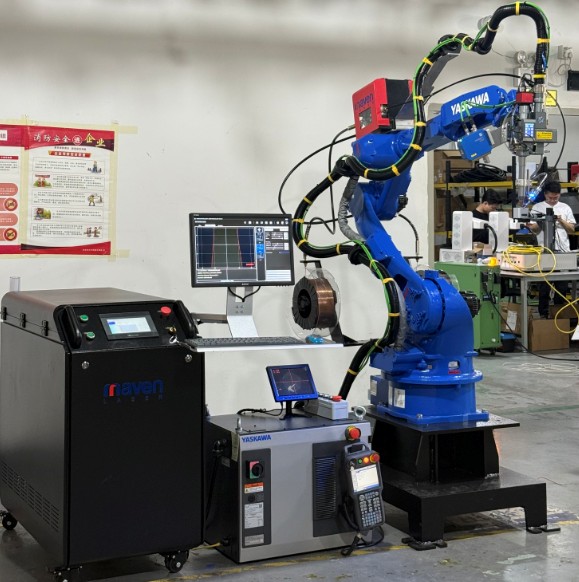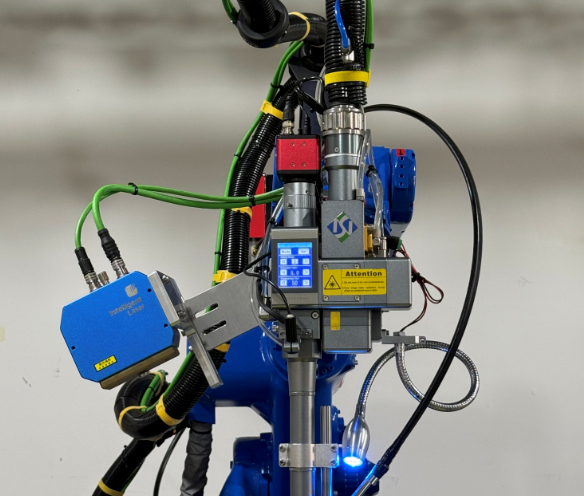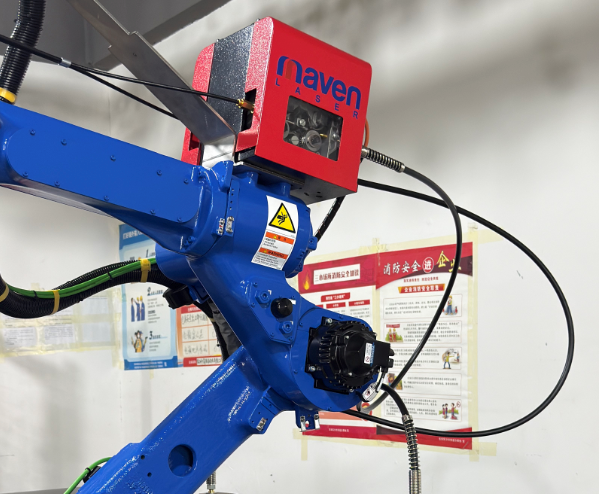At present, welding has become a new integrated technology. With the increasingly significant role of welding technology in the national economy, the advanced degree of welding technology has become a significant symbol of the advanced degree of national industry, therefore, vigorously develop complete sets of welding equipment, artificial intelligence technology, information processing technology, welding power control digital technology, welding quality control intelligent technology, welding production process robot welding technology, development to meet the modern Welding materials that meet production needs will certainly play an important role in building an innovative and energy-saving country.
First, the current domestic and foreign welding technology development trend
Welding is an important basic technology, and its development relies on the development of modern science and technology. Welding technology has only a hundred years of history, but its development is very rapid. Since the 20th century, especially in the past two or three decades, with the unprecedented development of science and technology, a variety of new welding technologies have emerged in endlessly, and new achievements in modern science and technology such as plasma physics, electron beam, infrared ray, vacuum, ultrasound, acoustics, microelectronics, etc. have been widely used in welding. The application of new technology has laid the foundation for the development of welding technology, enhanced the ability of welding technology, and expanded the scope of welding technology application. At present, dozens of welding methods with different characteristics have been formed. Welding technology has been widely used in energy, transportation, chemical industry, machinery, special equipment, electronics, aerospace, petroleum and many other fields. It can be said that the new achievements of modern science and technology have increasingly penetrated into the field of welding, and promoted the rapid development of modern welding technology.
(A) the development of welding equipment and welding methods
In recent decades, with the rapid development of science and technology, welding equipment and welding methods have also been greatly developed. At present, the remarkable characteristics of foreign welding equipment are high precision, high quality, high reliability, digital, intelligent control, large-scale, integrated and multi-functional. Both from the perspective of production composition and technology development, the domestic is developing in the direction of efficient, automated, intelligent, energy-saving and environmentally friendly welding. China’s arc welding equipment is gradually approaching the domestic level, adjust the product structure, improve the product grade, should vigorously develop the inverter welding power supply and automatic, semi-automatic welding machine, especially the high-efficiency and energy-saving carbon dioxide welding machine; Resistance welding technology to medium and high power as the main research content and development direction; Electromagnetic compatibility technology will be popularized in welding equipment, welding equipment industry in urgent need of low energy consumption, green products; Automatic welding technology and equipment are developing at an unprecedented speed, the Three Gorges project, west-east gas transmission project, aerospace engineering, Marine engineering and other national large-scale basic engineering development and the rise of the domestic automobile industry, have effectively promoted the development and progress of advanced welding technology, especially welding automation technology; Welding robots and intelligent welding will also be appropriately developed in specific fields and widely used; The demand for complete sets of special welding equipment is increasing, the application range is wider, the technical performance requirements are getting higher and higher, the equipment to meet the efficient new process will be more mature and popular, the domestic equipment manufacturing enterprises need to make new breakthroughs in the special, complete sets of welding equipment.
(2) The development of welding materials
With the progress of science and technology and the continuous innovation of industrial materials, the emergence of new materials has put forward new challenges and demands for welding technology. For example, the application of high-strength steel, aluminum alloys, nickel-based alloys and other materials has widely promoted the development of welding technology. Traditional welding methods may have some problems when dealing with these new materials, such as welding deformation, cracks and so on. Therefore, the development of new welding processes and technologies to improve the quality and reliability of welded joints has become an important direction of the current development of welding technology. At present, the output of welding materials in China is the first in the world, but in the structure of welding materials and industrial developed countries, the gap is very obvious. In order to adapt to the trend of welding production towards high efficiency, high quality, low cost and automation, developed countries such as the United States and Japan are constantly adjusting the product structure of welding materials. In the mid-1980s, foreign developed countries accounted for about 50% of the proportion of welding materials, by the beginning of the 21st century, Europe, North America, Japan in the consumption of welding materials, the proportion of welding rods are less than 20%, that is to say, the current automation and semi-automatic welding in developed countries, has accounted for more than 80% of the entire welding workload. From the development of welding materials in developed countries and regions such as the United States, Japan and Western Europe, the reduction of welding rods for manual arc welding and the continuous increase of automatic welding materials are an inevitable development trend. It is urgent to develop and produce self-protection and surfacing drug cored wire in our country. As for the copper-free wire introduced by domestic and foreign manufacturers, it should be called special coated wire, because of the different coating components and surface treatment methods of various manufacturers, the performance of the wire is also different. The excellent coating and surface treatment process not only plays the role of rust prevention and lubrication, but also does not produce copper dust during welding, and can improve the arc stability of the welding wire and reduce welding splash. At present, domestic and foreign manufacturers of this wire coating and surface treatment process is still improving, it is expected that this wire and the digital inverter welding machine accurately control the arc transition, can achieve high efficiency, low splash high-current CO2 welding, to achieve the equivalent of flux-cored wire welding process effect, is the future development direction.
(3) New welding methods, welding equipment and welding materials in the future
On the one hand, we should develop new welding methods, welding equipment and welding materials to further improve welding quality and safety reliability, such as improving the existing arc, plasma arc, electron beam, laser and other welding energy, using electronic technology and control technology to improve the process performance of the arc, and develop a reliable and lightweight arc tracking method; On the other hand, it is necessary to improve the level of welding mechanization and automation, such as welding machine to achieve program control, digital control, the development of special welding machine from the preparation process, welding to quality control of the whole process automation, in the automatic welding production line, the promotion and expansion of CNC welding robots and welding robots, can improve the level of welding production, improve welding health and safety conditions. In the 21st century, facing the grand goal of science and technology development in our country, facing the huge gap between our welding technology and foreign countries, which put forward higher requirements for welding workers, so we must use modern science and technology, and strive to promote the progress and development of welding technology.
Ii. Future welding technology outlook
In 2025, welding technology has been fully integrated into the industry 4.0 ecology, showing the three core features of “intelligent drive, precision integration, green and sustainable” .
intelligent penetration : The global industrial welding robot market penetration rate reached 67%, and the cost of AI welding system decreased by 40%.
Material innovation : Heterogeneous welding processes cover 90% of lightweight manufacturing scenarios.
Carbon neutral goal : The penetration rate of hydrogen welding machines exceeds 30%, and the welding carbon emission intensity will be reduced by 55% compared with 2020.
(A) Future welding technology core breakthrough direction
With the development of manufacturing to high-end and intelligent direction, welding technology is ushering in the following core breakthrough direction
1. Intelligent welding system
AI adaptive welding : AI driven welding system Weld identification and parameter optimization based on deep learning to realize real-time quality monitoring and defect warning.
· The adaptive welding robot can dynamically adjust the path and energy input to cope with complex working conditions (such as spacecraft surface welding). The welding robot equipped with the neural network can analyze the thermal deformation of the material in real time and dynamically adjust the welding parameters (such as the welding of the titanium alloy cabin of the spacecraft). The defect detection rate is increased to 99.5%, and the welding efficiency is increased by 50%.
Digital twin factory : Virtual simulation technology reduces welding process development cycle by 70% (Case: Tesla 4680 battery pack welding process optimization). The virtual simulation is used to predict welding deformation and reduce trial and error cost. Support 5G remote control of high-risk environment operations (such as nuclear power plant maintenance).
2. High precision energy technology
Ultrafast laser welding : Femtosecond laser welding achieves micron-level accuracy for chip packaging and micro medical devices such as pacemaker wire welding.
Laser-arc composite welding : combining laser high precision and arc high penetration, used for new energy vehicle battery packaging.
· electron beam vacuum welding: to achieve zero-pollution connection of titanium alloy and other difficult welding materials, used in medical device manufacturing.
Cold Metal Transition (CMT) upgrade : The heat input is reduced to 20% of the traditional MIG, suitable for aluminum lithium alloy body welding (BMW i7 line).
3. Space and deep sea welding
In-situ fabrication of lunar bases : NASA uses vacuum electron beam welding technology to weld metal structures directly with ilmenite in lunar soil.
Deep sea pipeline repair : the pressure depth of underwater welding robot exceeded 6,000 meters (CNOOC South China Sea Oil and Gas Field Project).
4. material compatibility breakthrough
Dissimilar material connection
· Develop aluminum/steel, ceramic/metal and other hybrid joint technology to promote lightweight structural design (such as aircraft weight reduction).
· composite welding
· Carbon fiber reinforced plastic (CFRP) ultrasonic welding, to solve the problem of insufficient strength of traditional bonding process.
5. Sustainable upgrade hydrogen welding machine : replace the traditional acetylene cutting, achieve zero carbon emissions. Welding smoke purification system : nano-filter core +AI risk control, capturing 99.9% harmful particles.
(3) Future welding technology key data and market forecast
Arc welding equipment, including welders, power supplies and other accessories, accounts for about half of all welding equipment and is expected to grow at an annual rate of 6%. Resistance welding equipment, including welders, transformers, controllers and components will also grow at a high growth rate. Gas welding and gas cutting are expected to have a lower growth rate. Other welding equipment, such as stud welding, laser welding, friction welding, electron beam welding and ultrasonic welding equipment will grow at a faster rate. Robotic welding equipment will grow at a very high rate, and its import rate will increase even more, because most welding is manufactured outside the United States. As the United States is the world’s largest welding and cutting equipment manufacturing country, the export of welding and cutting equipment will continue to strengthen. There are two categories of welding filler metals; Welding rods and wires. The amount of electrode will decrease year by year, while the amount of wire, including solid wire and flux-cored wire, will increase year by year. This is an irreversible trend of development.
Market size : The global welding technology market is 218 billion US dollars (2025), with a compound annual growth rate of 9.3%.
Technology proportion :
· Laser welding: 32%
· Intelligent welding system: 28%
· Green welding technology: 25%
· Regional growth : The Asia-Pacific region contributed 45% of the increase, and China dominated the supply chain of new energy and semiconductor welding equipment.
· (4) Challenges and prospects of future welding technology
Challenge :
Welding reliability in extreme environments (such as ultra-high temperature fusion reactors).
· nanoscale welding process standardization (chip 3D stacking).
· Vision for 2030:
· Quantum welding technology: the use of quantum entanglement principle to achieve atomic level material bonding.
· Biowelding: Research and development of biodegradable low-temperature solder based on biological enzymes.
· (2) Future welding technology industry application fields
· New energy vehicles
· Aerospace
· Medical equipment
· Architecture
· III. Summary of future welding technology
· In a word, the development trend and prospect of welding technology are exciting. With the continuous innovation of materials, equipment and automation technology, welding technology will gradually achieve efficient, high-quality and intelligent development. This will provide more opportunities and challenges for the development of the manufacturing industry. However, we also need to in-depth research and exploration, and constantly promote the innovation and progress of welding technology to meet the changing market needs. Only by constantly pursuing innovation and development, welding technology can play a more important role in the future industrial field. Welding technology has broken through the boundaries of traditional manufacturing and become a hub of interdisciplinary innovation. In the next decade, its cross-integration with artificial intelligence, quantum computing, and bioengineering will reshape the competitive landscape of global high-end manufacturing.
Post time: Mar-14-2025



















